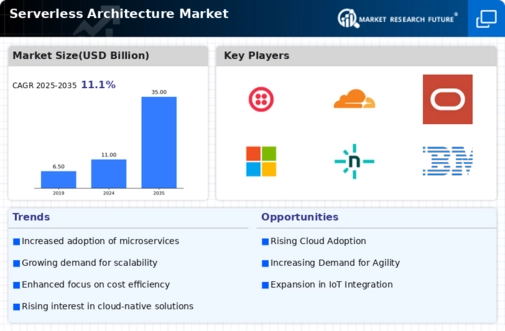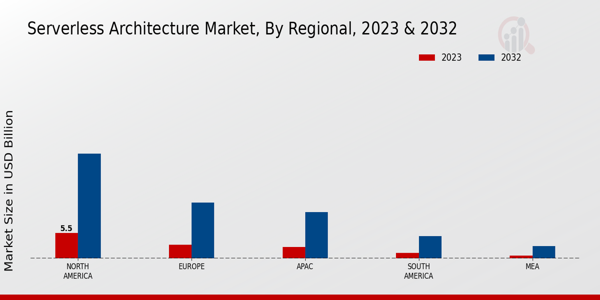Serverless Architecture Size
Serverless Architecture Market Growth Projections and Opportunities
The serverless architecture market is shaped by a myriad of market factors that collectively influence its growth, adoption, and evolution. One pivotal factor is the increasing demand for cost-effective and scalable solutions. When companies are looking to fine-tune their IT spending and scale up their applications as needed, serverless architectures are very favorable because the user pays only for the resources consumed by an application. Cost-effectiveness of Stream is attractive for businesses who want to remain with low overheads yet achieve high throughput and operational efficiency. The increased adoption of microservices and containerization also adds to the growth of severless computing architecture. With a plethora of organizations adapting the modular and distributed approach towards application developments, serverless architectures fit in very well into this scenario by providing a platform for deploying and managing individual functions or services. The cooperation of serverless computing with microservices and containers speeds up the development and implementation of complex applications leading to a convergence market where these technologies coexsit and reinforce each other. An increasing significance in market factors that are related to security and compliance is evident. The increased entrustment of critical workloads and confidential data by businesses to serverless environments aggravates security as a top concern. Serverless service providers respond by implementing strong security measures, encryption protocols, compliance certifications deployed to instill confidence in their users. The ability to adequately manage security issues becomes a determining factor for organizations which are about to deploy serverless architectures thus the market is growing in favour of providers with a full stack of security offerings. In addition, the cloud and remote workforce adoption has also impacted the serverless architecture market dynamics. Serverless solutions show a lot of promise as they are flexible and can be scaled accordingly, hence they are suitable for the applications and services that serve the remote teams. The continuously increasing popularity of the decentralized business models among both large corporations and small startups leads to growth of the market, where serverless architectures are the requisite for cloud-native applications development and deployment. Moreover, the impact of regulatory frameworks, data sovereignty and so on will definitely change this serverless architecture market. Data protection regulations and compliance requirements vary across regions, impacting how organizations choose their serverless providers. Providers that can demonstrate adherence to international and regional data protection standards position themselves favorably in a market where businesses prioritize regulatory compliance and data sovereignty.



















Leave a Comment